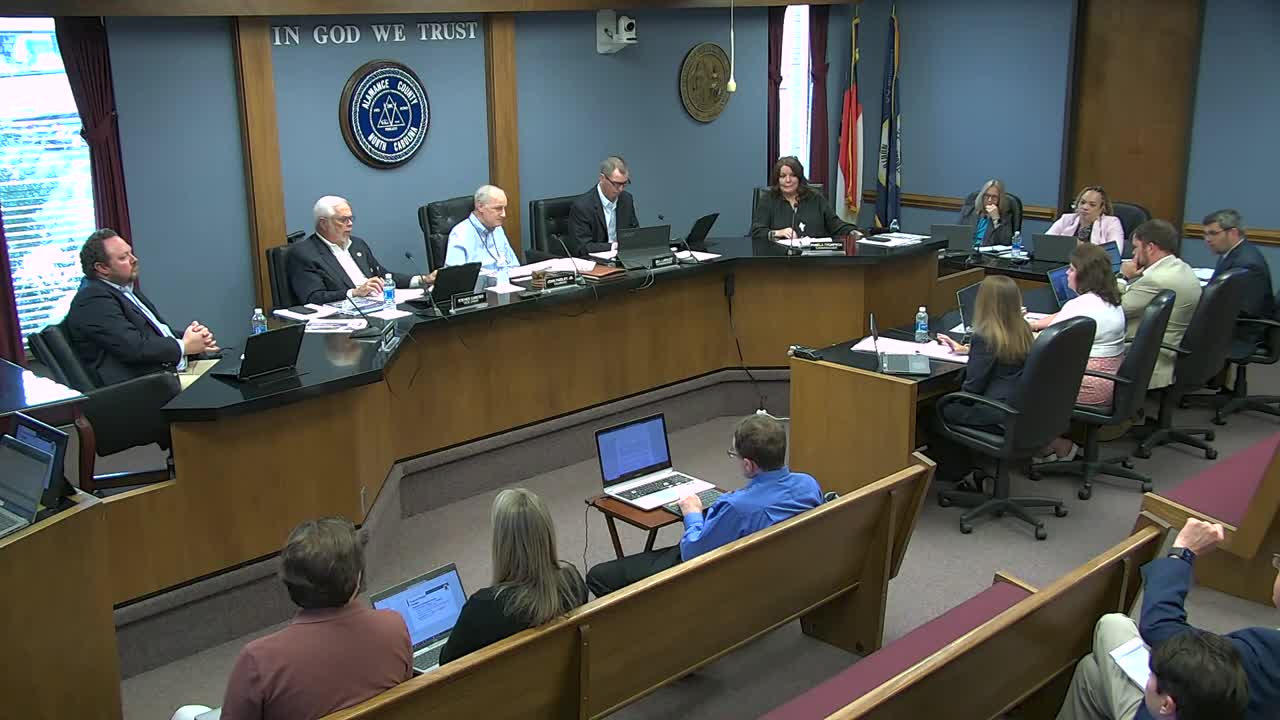Budget Crisis Forces Tough Decisions on School Funding
June 15, 2024 | Alamance County, North Carolina

This article was created by AI summarizing key points discussed. AI makes mistakes, so for full details and context, please refer to the video of the full meeting. Please report any errors so we can fix them. Report an error »

During a recent government meeting, officials discussed the financial implications of the proposed budget for the upcoming fiscal year, particularly focusing on funding for local schools and the potential need for a tax increase. The conversation highlighted the complexities of the current expense funding, which includes allocations for utilities and maintenance, and the challenges posed by a significant budget shortfall.
The proposed budget allocates approximately $48.8 million for current expenses, which is the same amount as the previous year. However, the school system has requested an increase of over $10 million, raising concerns about how to meet these needs without exceeding the general fund's capacity. Officials noted that the general fund is projected to decrease from 3% to 17%, prompting discussions about the necessity of a tax rate increase to cover the additional expenses.
A key point of contention was the suggestion of a 2-cent tax increase, which would generate approximately $3 million annually. This increase is seen as essential to support the school system's operational needs, including utilities and preventative maintenance contracts. However, some officials expressed hesitation, emphasizing the need to balance taxpayer burdens with the financial requirements of the schools.
The meeting also touched on the implications of previous bond issuances, with one commissioner expressing regret over exceeding a previously established debt limit of $150 million. This has led to concerns about transparency and trust among taxpayers regarding how funds are allocated and spent.
As the discussion progressed, officials acknowledged the statutory obligation to fund school utilities and the potential for cuts in other areas to accommodate increased funding for education. The conversation underscored the ongoing struggle to provide adequate support for local schools while managing fiscal responsibilities and taxpayer expectations.
In conclusion, the meeting revealed a critical juncture for local education funding, with officials grappling with the need for increased financial support against the backdrop of budget constraints and community trust. The outcome of these discussions will likely shape the future of educational resources in the area.
The proposed budget allocates approximately $48.8 million for current expenses, which is the same amount as the previous year. However, the school system has requested an increase of over $10 million, raising concerns about how to meet these needs without exceeding the general fund's capacity. Officials noted that the general fund is projected to decrease from 3% to 17%, prompting discussions about the necessity of a tax rate increase to cover the additional expenses.
A key point of contention was the suggestion of a 2-cent tax increase, which would generate approximately $3 million annually. This increase is seen as essential to support the school system's operational needs, including utilities and preventative maintenance contracts. However, some officials expressed hesitation, emphasizing the need to balance taxpayer burdens with the financial requirements of the schools.
The meeting also touched on the implications of previous bond issuances, with one commissioner expressing regret over exceeding a previously established debt limit of $150 million. This has led to concerns about transparency and trust among taxpayers regarding how funds are allocated and spent.
As the discussion progressed, officials acknowledged the statutory obligation to fund school utilities and the potential for cuts in other areas to accommodate increased funding for education. The conversation underscored the ongoing struggle to provide adequate support for local schools while managing fiscal responsibilities and taxpayer expectations.
In conclusion, the meeting revealed a critical juncture for local education funding, with officials grappling with the need for increased financial support against the backdrop of budget constraints and community trust. The outcome of these discussions will likely shape the future of educational resources in the area.
View full meeting
This article is based on a recent meeting—watch the full video and explore the complete transcript for deeper insights into the discussion.
View full meeting
